 |
 |
 |
| |
Doxycycline PEP Cuts Bacterial STI Rate Over 60% After Condomless Sex
|
| |
| |
AIDS 2022, July 29-August 2, Montreal
Mark Mascolini
Taking doxycycline (doxy) postexposure prophylaxis (PEP) within 72 hours of condom-free sex sliced quarterly bacterial sexually transmitted infection (STI) rates over 60% in HIV-positive men who have sex with men (MSM) and transgender women (TGW) and in HIV-negative MSM and TGW taking preexposure prophylaxis (PrEP) against HIV in a US randomized trial, DOXYPEP [1]. Incidence of every bacterial STI studied, including gonorrhea, fell in people using doxy PEP.
DOXYPEP researchers reminded AIDS 2022 attendees that STIs occur in higher proportions of MSM than in other sexually active groups. Prior research in France found that doxy PEP cut chlamydia and syphilis rates by two thirds in MSM taking as-needed PrEP [2]. But doxy PEP did not slow new gonorrhea infections in this trial.
DOXYPEP is an open-label (nonblinded) trial that enrolled people assigned male sex at birth who had HIV infection or took PrEP to prevent HIV [3]. Participants had at least 1 STI in the past 12 months and condomless sex with at least 1 male partner in the past 12 months. They got tested for STIs quarterly at HIV and STI clinics in San Francisco and Seattle. Participants got randomized to no PEP or to doxy within 72 hours of condomless sex at a maximum dose of 200 mg every 24 hours. The primary endpoint was at least 1 new STI-gonorrhea, chlamydia, or syphilis-during a follow-up quarter.
At a scheduled interim analysis in May 2022, the Data and Safety Monitoring Board recommended stopping enrollment because doxy was significantly superior to no PEP in both HIV-positive enrollees and PrEP-taking enrollees. At that point the trial had signed up 327 people using PrEP and 174 with HIV. Median age for the combined groups stood at 38 (interquartile range 32 to 47), and racial/ethnic proportions were 67% white, 8% black, 11% Asian/Pacific Islander, and 15% multiple races or other. Most participants (96%) identified as male and 4% identified as TGW or gender diverse. The group had a median of 9 sex partners in the past 3 months, and STI rates in the past 12 months stood at 69% for gonorrhea, 58% for chlamydia, and 20% for syphilis. More than one third of participants reported substance use in the past month.
In the PrEP group, STI incidence per quarter measured 31.9% in people not taking doxy PEP versus 10.7% in people taking doxy after condomless sex. Those numbers translated into a two thirds lower STI incidence per quarter in people taking doxy (risk reduction 0.34, 95% confidence interval [CI] 0.24 to 0.46, P < 0.0001). In people with HIV, new STI rates were 30.5% with no PEP versus 11.8% with PEP, also about a two thirds plunge in infection rate (risk reduction 0.38, 95% CI 0.24 to 0.60, P < 0.0001).
Among people taking doxy PEP, new STI rates per quarter proved as substantial for gonorrhea (20.2% with no PEP vs 9.1% with PEP in the PrEP group; 20.3% with no PEP vs 9.1% with doxy PEP in the HIV group) as for chlamydia and syphilis. Statistical analysis showed a significantly greater gonorrhea risk reduction with doxy PEP than with no PEP-about 55% in both the PrEP cohort and the HIV-positive cohort.
Doxy PEP looked safe in this clinical trial. The researchers cataloged no grade 3 or worse adverse events, no grade 2 or worse lab abnormalities, and no serious adverse events in this study group. Only 1.5% of participants stopped PEP because of intolerance or "participant preference."
The DoxyPEP team concluded that doxy may be effective in preventing bacterial STIs in populations with high background STI prevalence-30% per quarter in this San Francisco-Seattle MSM and TGW group. In a 2018 editorial, PEP and PrEP researchers Martin Siguier and Jean-Michel Molina cautioned that "long-term consequences of this strategy are yet unknown, especially the risk of selection and dissemination of syphilis and chlamydia strains with doxycycline resistance" [4].
References
1. Luetkemeyer A, Dombrowski J, Cohen S, et al. Doxycycline post-exposure for STI prevention among MSM and transgender women on HIV PrEP or living with HIV: high efficacy to reduce incident STI's in a randomized trial. AIDS 2022, July 29-August 2, Montreal. Abstract OALBX0103.
2. Molina JM, Charreau I, Chidiac C, et al; ANRS IPERGAY Study Group. Post-exposure prophylaxis with doxycycline to prevent sexually transmitted infections in men who have sex with men: an open-label randomised substudy of the ANRS IPERGAY trial. Lancet Infect Dis. 2018;18:308-317. doi: 10.1016/S1473-3099(17)30725-9.
https://www.thelancet.com/journals/laninf/article/PIIS1473-3099(17)30725-9/fulltext
3. ClinicalTrials.gov. Evaluation of doxycycline post-exposure prophylaxis to reduce sexually transmitted infections in PrEP users and HIV-infected men who have sex with men. ClinicalTrials.gov identifier NCT03980223. https://clinicaltrials.gov/ct2/show/NCT03980223
4. Siguier M, Molina JM. Doxycycline prophylaxis for bacterial sexually transmitted infections: promises and perils. ACS Infect Dis. 2018;4:660-663. doi: 10.1021/acsinfecdis.8b00043. https://pubs.acs.org/doi/10.1021/acsinfecdis.8b00043
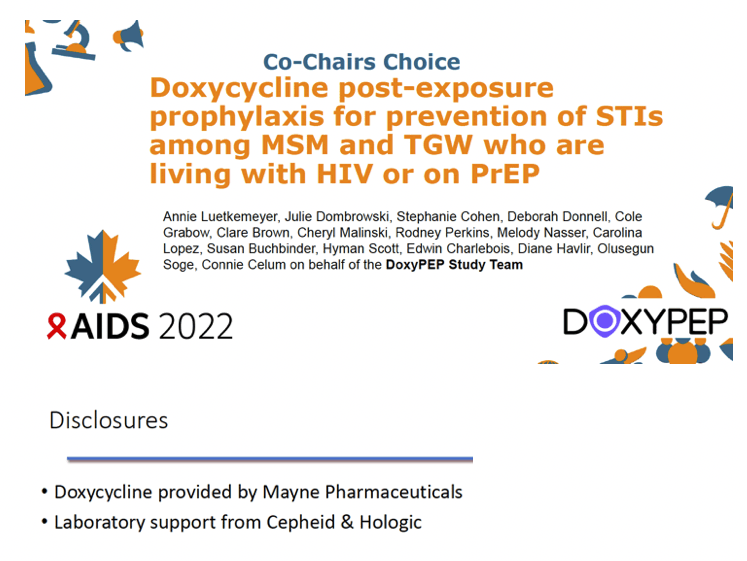
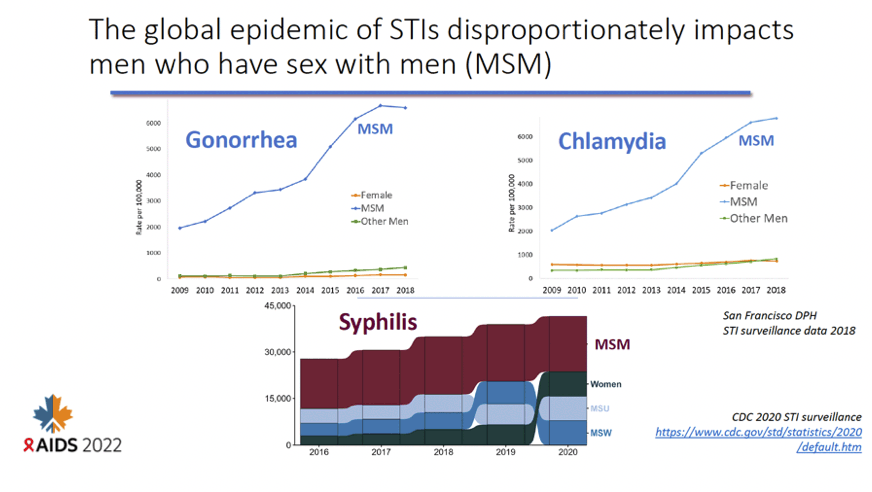
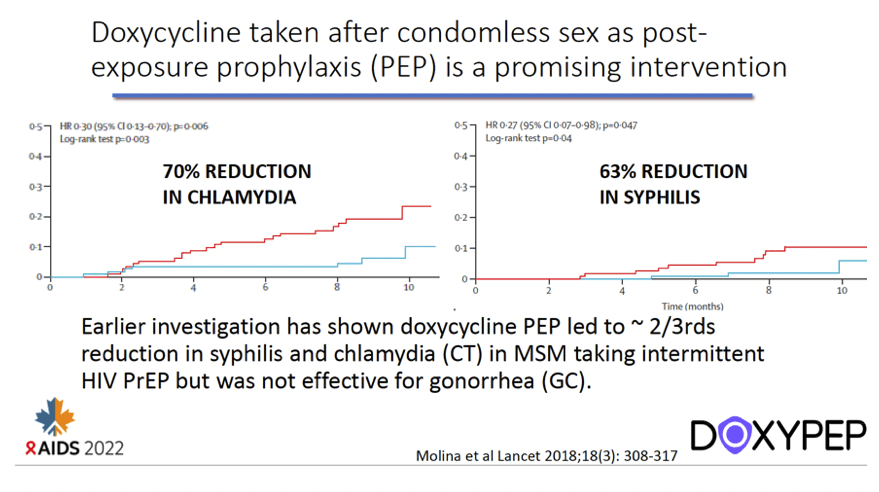
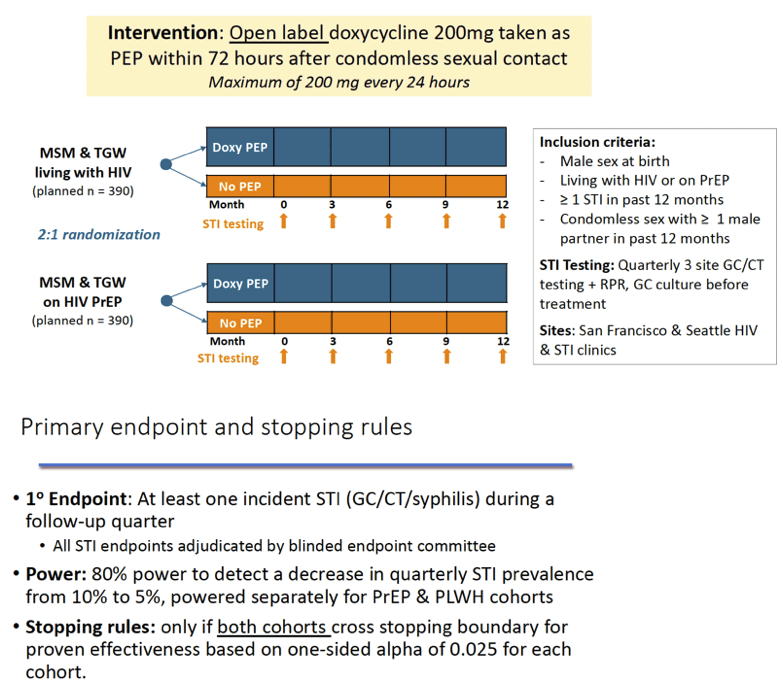
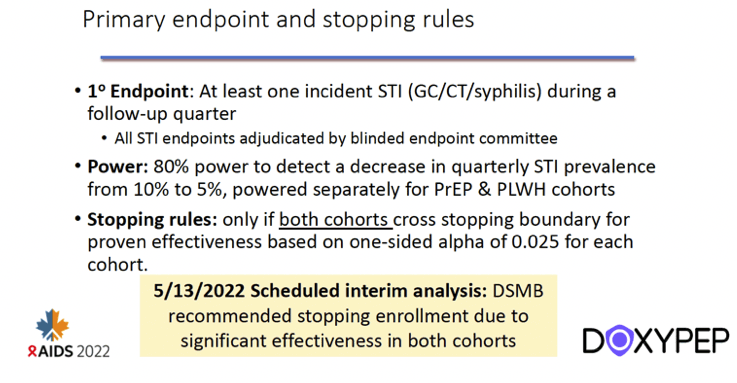
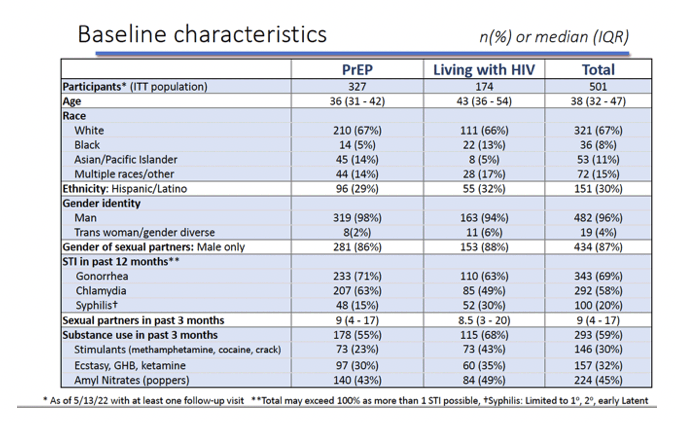
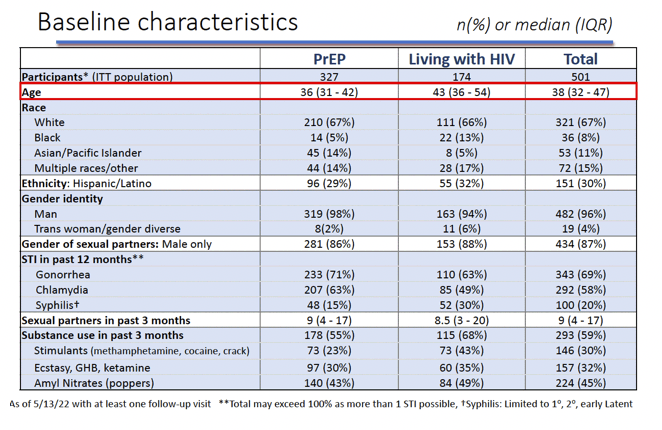
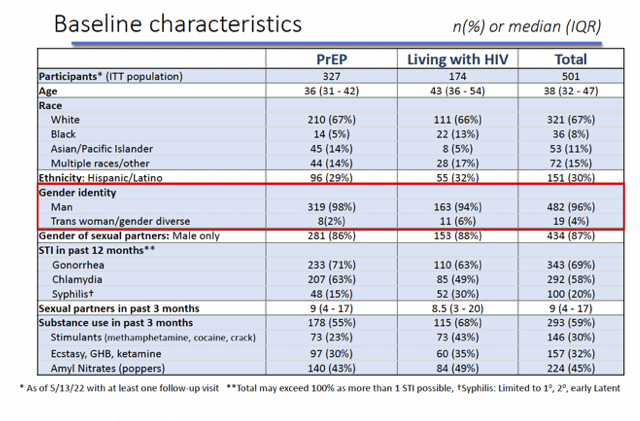
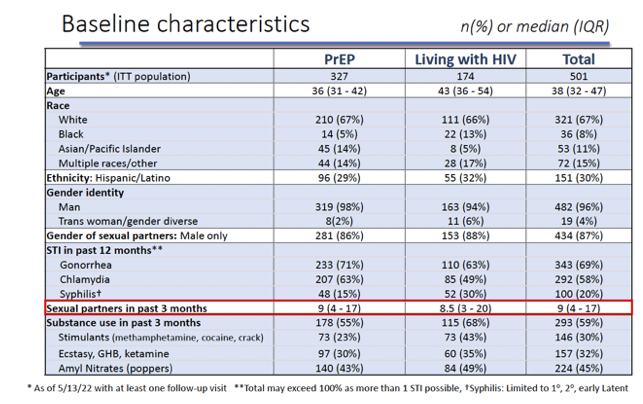
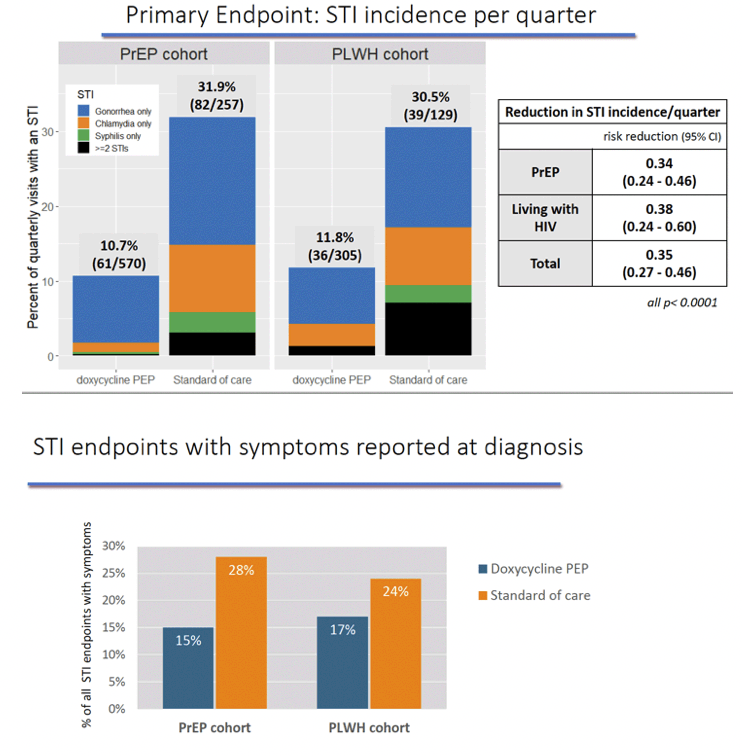
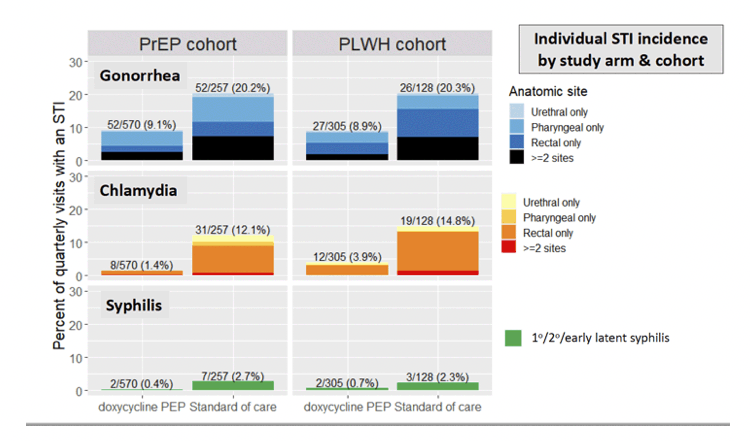
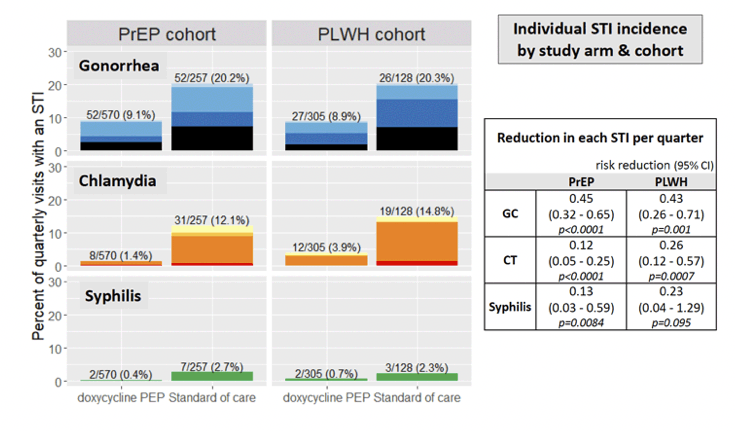
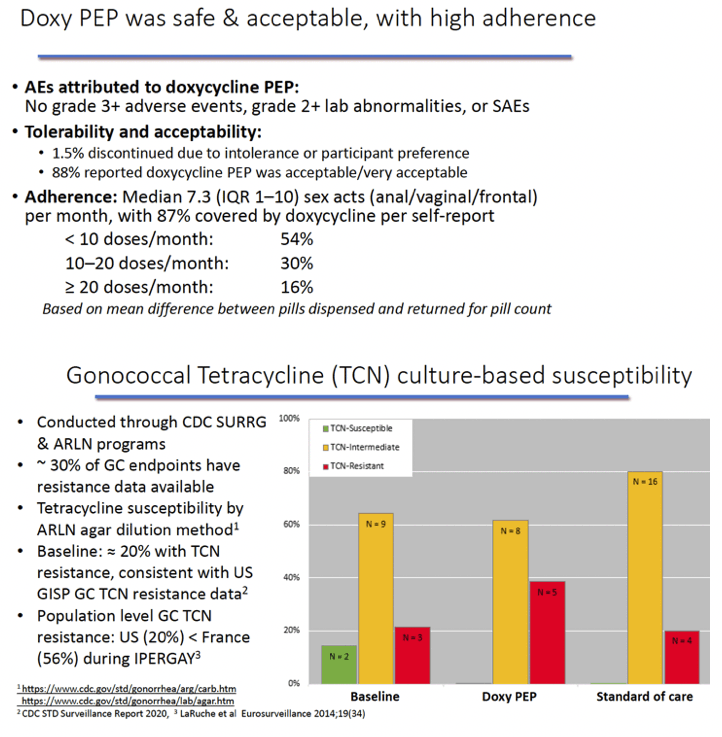
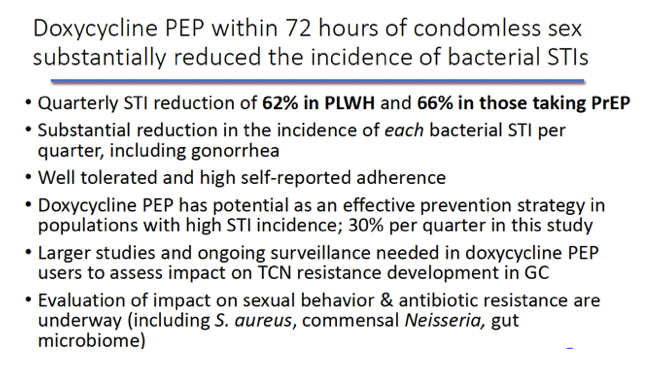
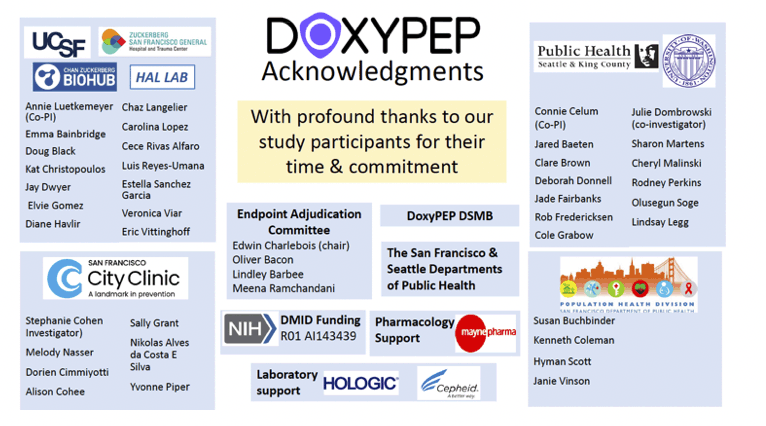
|
| |
|
 |
 |
|
|